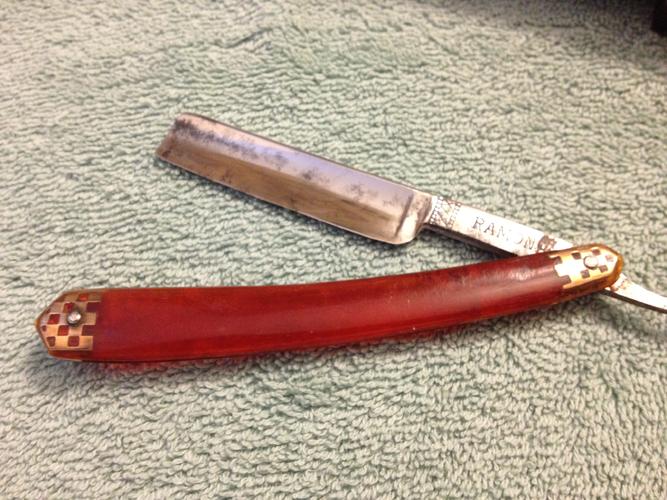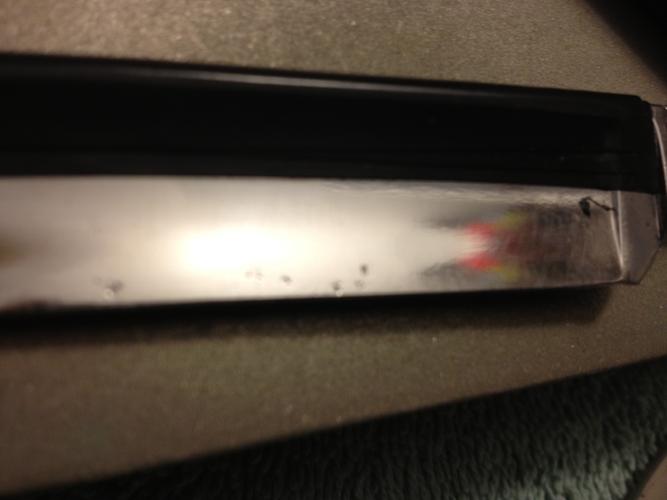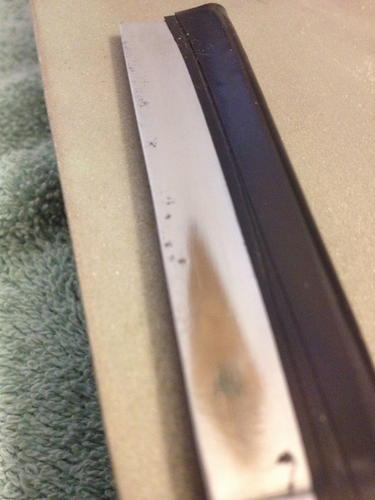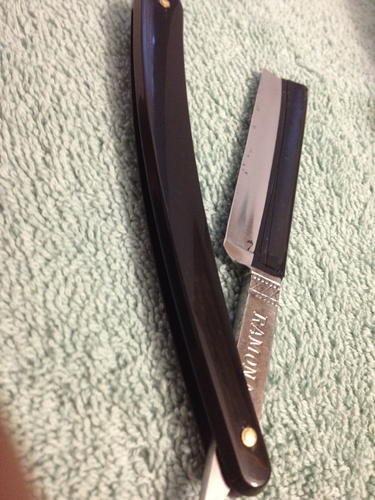Results 1 to 2 of 2
Hybrid View
-
07-21-2012, 07:16 PM #1Senior Member

- Join Date
- Apr 2012
- Location
- Jersey City
- Posts
- 225
Thanked: 50 To Ramona
To Ramona
Failure is, in a sense, the highway to success, inasmuch as every discovery of what is false leads us to seek earnestly after what is true, and every fresh experience points out some form of error which we shall afterwards carefully avoid.John Keats
Picked up 3 Liberty Laboratories "Ramona" 5/8" full hollows with interesting scales in an Ebay lot. They were identical except for the condition.

The one above is one of the better ones. I started with the razor that was in the worst condition with broken scales and a deeply pitted edge. I'm still very much in a learning mode so there would be little lost if things didn't work out in the restoration. I've learned to polish and hone razors but this would be the first time working on trying to get a junker fixed up.
I started by bread knifing the blade on the DMT 325 in order to get down to a straight and unchipped edge. Then started with 180 grit sandpaper on the pits and the tarnish. The pits on the spine and at the top of the razor I was able to get to a into relatively smooth condition by being fairly aggressive with the Dremel and then coming back with the 180 and 220 grit. Really got a better understanding of the process of handsanding, going from one direction to another and then from one grit to the next.
The edge was only done by hand. The pitting there was stubborn and deep. I sanded down as far as I felt comfortable with but didn't want to end up with the steel so thin that it would be fragile or more fragile than it was already.
I then tossed it into the new tumbler for a couple of days and got it polished up. The pits were still there but it looked like I could get some good steel for an edge. I had a cheap, plastic set of scales that I decided to put on it and hone it up. The up side was that this was also my first time peening a razor so the voyage continued. Managed to pin the blade without breaking the scales and then got brave. I decided to unpin the head of the razor and at least make the pins match. That worked out all right so I was looking forward to honing it up this morning and taking it out for a test shave.
Taped it up with 3 layers of tape and got at it with the DMT 325 as I knew that I would have to start from scratch with setting a bevel. It didn't take long with the microscope to figure out it was a lost cause. The remaining pits on the edge were all situated in a way that if the one near the toe got smoothed out, then a new one in the middle would start to show up. I now understood the wisdom behind the advice about honing up a restore before doing anything else.


All in all, it was good. I can unpin the scales and use them elsewhere. I now know to put an edge on a blade to see it it's worth restoring. If it won't shave, what's the point? A restoration takes time and patience, so I'll need to change my perspective on that part of the hobby.
The other thing I've learned is that I don't like the off-the-shelf plastic TI scales, with no disrespect to the vendors. Making my own scales is is going to be time consuming and an expensive proposition so that's an issue. There ought to be a price point that works for a small scale manufacturer that can supply a better quality and better variety of scale for those of us who don't have home work shops. Certainly a niche market but one that seems to be wide open.
A final look at the effort before I disassemble and move on. I just hope I can get that damn song out of my head.

http://
-
07-21-2012, 11:40 PM #2Senior Member

- Join Date
- Mar 2011
- Location
- Corcoran, Minnesota
- Posts
- 665
Thanked: 170
Enjoyed following your journey. Been there, done that, got the tee shirt. Wood scales aren't that hard - lots of neat wood at Woodcraft, Rockler, and the various turning suppliers. Thanks for the Bob Dylan tune. Namaste.
PS Just bought To Ramona from iTunes.Last edited by skipnord; 07-21-2012 at 11:47 PM.


 1Likes
1Likes
 LinkBack URL
LinkBack URL About LinkBacks
About LinkBacks







 Reply With Quote
Reply With Quote
